"Collisions: Information, Harmony And Conflict"
Chun Kwang Young
![]()
SUNDARAM TAGORE GALLERY
5 Lock Road 01-05 Gillman Barracks Singapore 108933
tel +65 6694 3378 e-mail:


November 22, 2019 > February 1, 2020
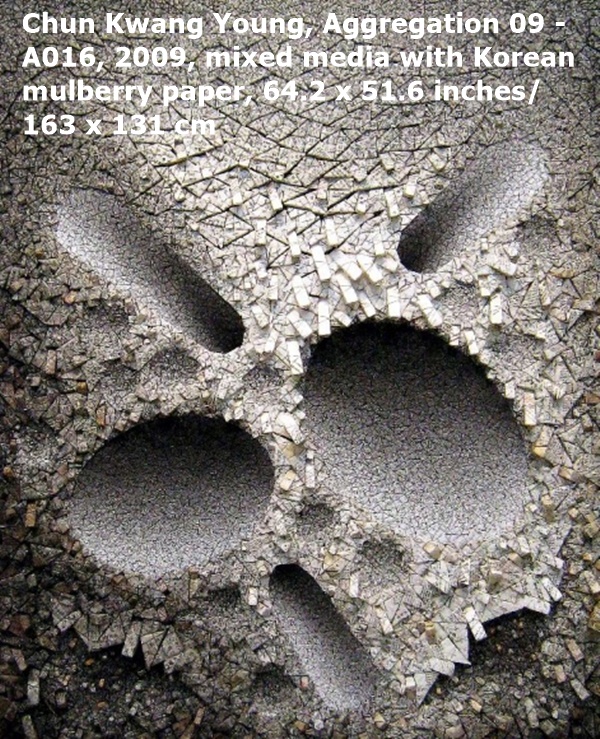
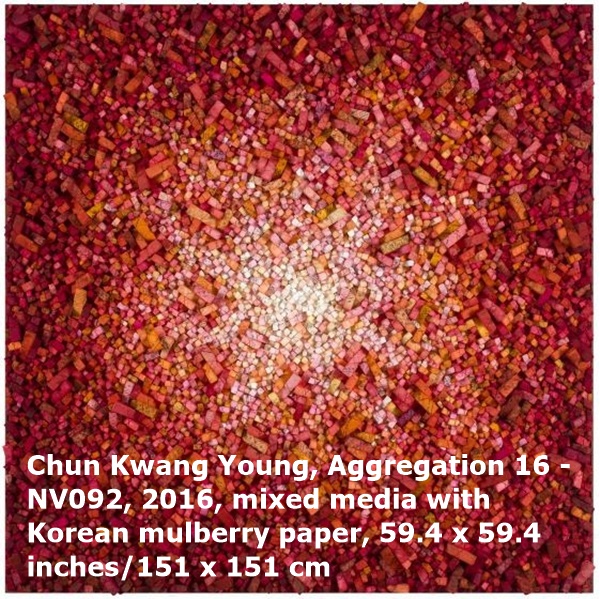
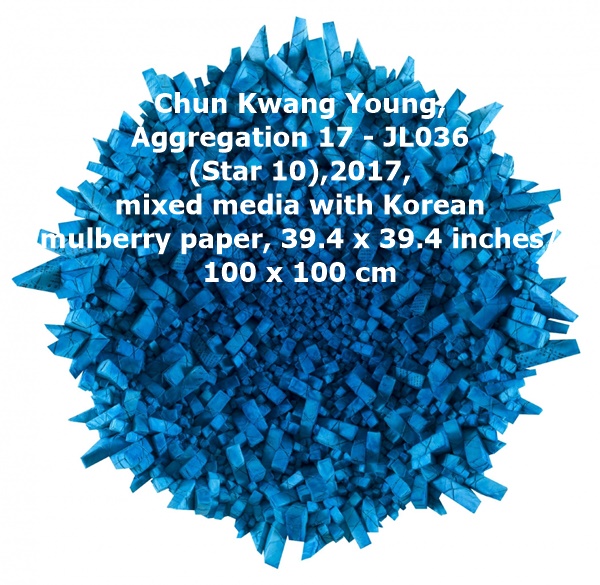
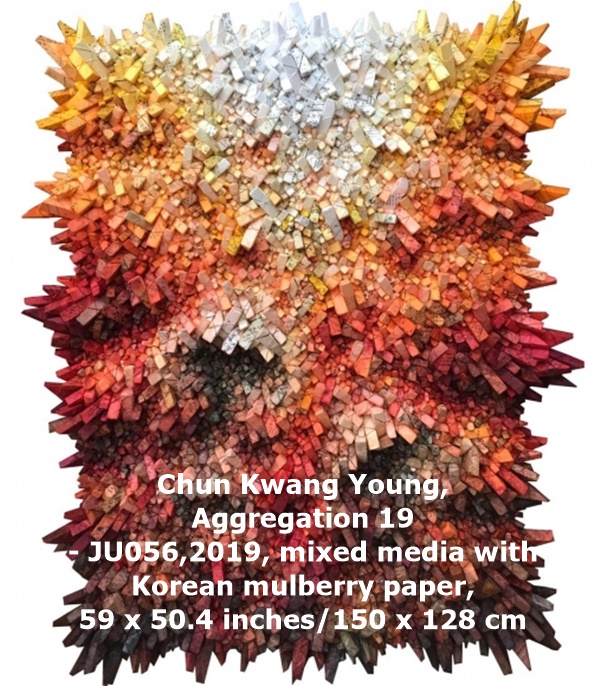
Sundaram Tagore Gallery is pleased to present a solo exhibition of work by Chun Kwang Young. The acclaimed Korean artist is best known for his Aggregations; freestanding and wall-hung sculptural works made from thousands of triangular forms wrapped in antique mulberry paper tinted with teas or pigment. This show comes on the heels of Chun's recent solo exhibition at the Brooklyn Museum, which ran for seven months. The artist’s work is currently on view at the Jordan Schnitzer Museum of Art, Oregon, USA.
Chun Kwang Young was born in Hongchun, South Korea, in 1944 and grew up during the end of Japanese colonization and the brutality of the Korean War. He began his career as a painter, moving to the United States in the 1970s to pursue a Master’s Degree at Philadelphia College of Art, where he was deeply drawn to Abstract Expressionism. “It seemed to be the best way to freely express my surprise and sadness at witnessing the huge gap between idea and reality,” he says.
Chun’s paintings explored the effects of light and color, however, he ultimately found the expression inauthentic. Over time, he became disillusioned with the materialistic drive that seemed to fuel the American dream and feelings of loneliness intensified his longing for home. Chun decided to return to Korea and focus on developing his own methodology, one that was wholly unique and reflective of his history and cultural identity.
The development of Chun’s signature technique was sparked by childhood memories of seeing medicinal herbs wrapped in mulberry paper, tied into small packages and hung from the ceiling of the local Chinese medicine doctor’s apothecary. Chun became intrigued by the idea of merging the techniques, materials, and sentiment of his Korean heritage with the conceptual freedom he experienced during his Western education.
Chun’s decision to use mulberry paper—known as hanji in Korea—is significant. It embodies the essence of Korean history and imparts a spiritual power, even in its most mundane applications. Derived from native trees and prized for its strength and ability to resist water, hanji has been used in Korea for centuries for everything from writing and drawing to packaging and weatherproofing.
With history in mind, Chun sources paper from antique books. “The hanji that I am currently using are from books between fifty and a hundred years old,” he says. “Each has its history and each generation of our ancestors’ joys and sorrows can be seen in the thousands of aggregated fingerprints that make my work even more mystical and precious. It’s almost as if these fingerprints are trying to have a conversation with me, to explain their reasons for being there.”
To create his compositions, Chun starts with the triangular forms, which are individually cut from polystyrene, wrapped in hanji and tied with string made from the same material. He then adheres each wrapped piece to a flat support or sculptural substructure. Once adhered, some of the forms are painted by hand. The process, multifaceted and repetitive in nature, necessitates an almost meditative approach.
Chun’s arrangements vary from seemingly uniform surfaces to works that burst from their frames, constituting low reliefs. His palette ranges from subtle, sepia-toned hues, which naturally result from the teas he uses to tint the paper, to pigments in vibrant blue, red, orange and yellow. Some of the works employ subtle shifts in tone and color to create the illusion of craters, dips and depressions. Rendered in a restrained palette of natural hues, the overall effect is organic, geological—almost cosmic in appearance.
Over the years, Chun’s Aggregations have become more colorful and evolved in complexity and scale, but the use of mulberry paper remains at the core of his practice. Although imbued with the spirit of Korean tradition and history, Chun’s work, with its intricate, abstract compositions, is grounded in a purely contemporary context.
A digital catalogue with an essay by Dr. Marius Kwint, reader in Visual Culture, School of Art and Design, University of Portsmouth, U.K., accompanies the exhibition.
The opening reception on Friday, November 22, coincides with the opening of the Singapore Biennale and a late-night celebration at Gillman Barracks.
Chun Kwang Young was born in Hongchun, South Korea, in 1944 and grew up during the end of Japanese colonization and the brutality of the Korean War. He began his career as a painter, moving to the United States in the 1970s to pursue a Master’s Degree at Philadelphia College of Art, where he was deeply drawn to Abstract Expressionism. “It seemed to be the best way to freely express my surprise and sadness at witnessing the huge gap between idea and reality,” he says.
Chun’s paintings explored the effects of light and color, however, he ultimately found the expression inauthentic. Over time, he became disillusioned with the materialistic drive that seemed to fuel the American dream and feelings of loneliness intensified his longing for home. Chun decided to return to Korea and focus on developing his own methodology, one that was wholly unique and reflective of his history and cultural identity.
The development of Chun’s signature technique was sparked by childhood memories of seeing medicinal herbs wrapped in mulberry paper, tied into small packages and hung from the ceiling of the local Chinese medicine doctor’s apothecary. Chun became intrigued by the idea of merging the techniques, materials, and sentiment of his Korean heritage with the conceptual freedom he experienced during his Western education.
Chun’s decision to use mulberry paper—known as hanji in Korea—is significant. It embodies the essence of Korean history and imparts a spiritual power, even in its most mundane applications. Derived from native trees and prized for its strength and ability to resist water, hanji has been used in Korea for centuries for everything from writing and drawing to packaging and weatherproofing.
With history in mind, Chun sources paper from antique books. “The hanji that I am currently using are from books between fifty and a hundred years old,” he says. “Each has its history and each generation of our ancestors’ joys and sorrows can be seen in the thousands of aggregated fingerprints that make my work even more mystical and precious. It’s almost as if these fingerprints are trying to have a conversation with me, to explain their reasons for being there.”
To create his compositions, Chun starts with the triangular forms, which are individually cut from polystyrene, wrapped in hanji and tied with string made from the same material. He then adheres each wrapped piece to a flat support or sculptural substructure. Once adhered, some of the forms are painted by hand. The process, multifaceted and repetitive in nature, necessitates an almost meditative approach.
Chun’s arrangements vary from seemingly uniform surfaces to works that burst from their frames, constituting low reliefs. His palette ranges from subtle, sepia-toned hues, which naturally result from the teas he uses to tint the paper, to pigments in vibrant blue, red, orange and yellow. Some of the works employ subtle shifts in tone and color to create the illusion of craters, dips and depressions. Rendered in a restrained palette of natural hues, the overall effect is organic, geological—almost cosmic in appearance.
Over the years, Chun’s Aggregations have become more colorful and evolved in complexity and scale, but the use of mulberry paper remains at the core of his practice. Although imbued with the spirit of Korean tradition and history, Chun’s work, with its intricate, abstract compositions, is grounded in a purely contemporary context.
A digital catalogue with an essay by Dr. Marius Kwint, reader in Visual Culture, School of Art and Design, University of Portsmouth, U.K., accompanies the exhibition.
The opening reception on Friday, November 22, coincides with the opening of the Singapore Biennale and a late-night celebration at Gillman Barracks.
 | Chun Kwang Young |
OPENING RECEPTION :
Friday, November 22, 7-9 PM
Friday, November 22, 7-9 PM
mpefm
SINGAPORE art press release
Opening hours :
Tuesday - Saturday 11am - 7pm Sunday 11am - 6pm
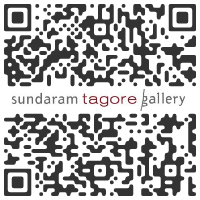
QR of this press release
in your phone, tablet








